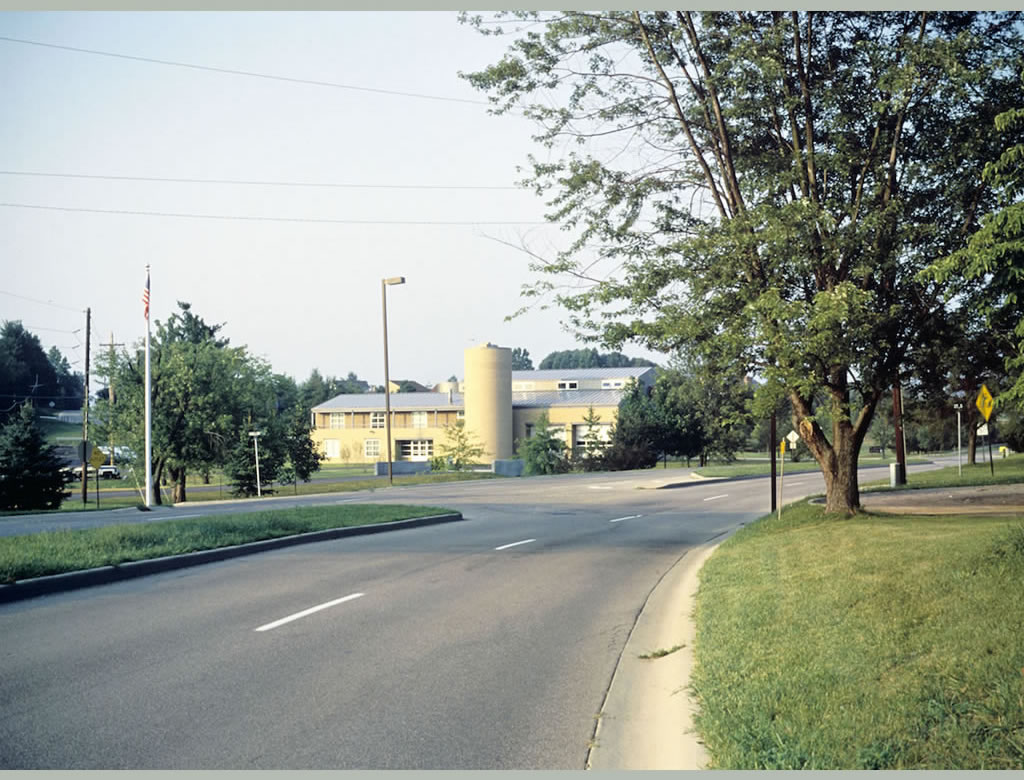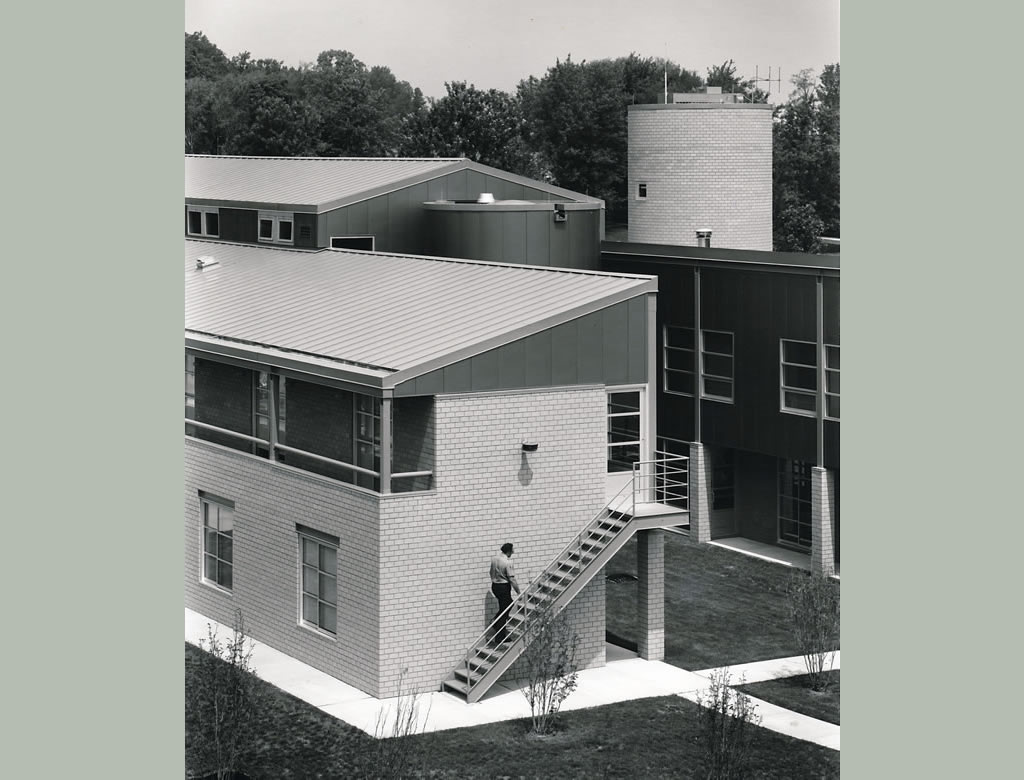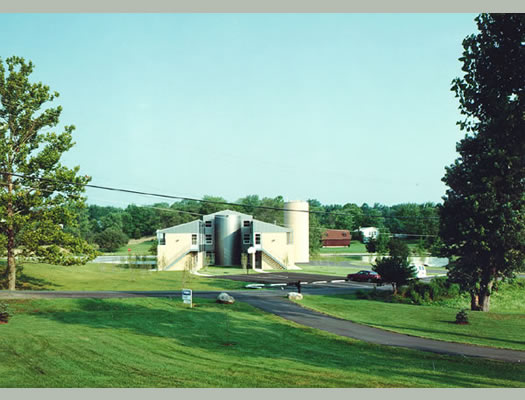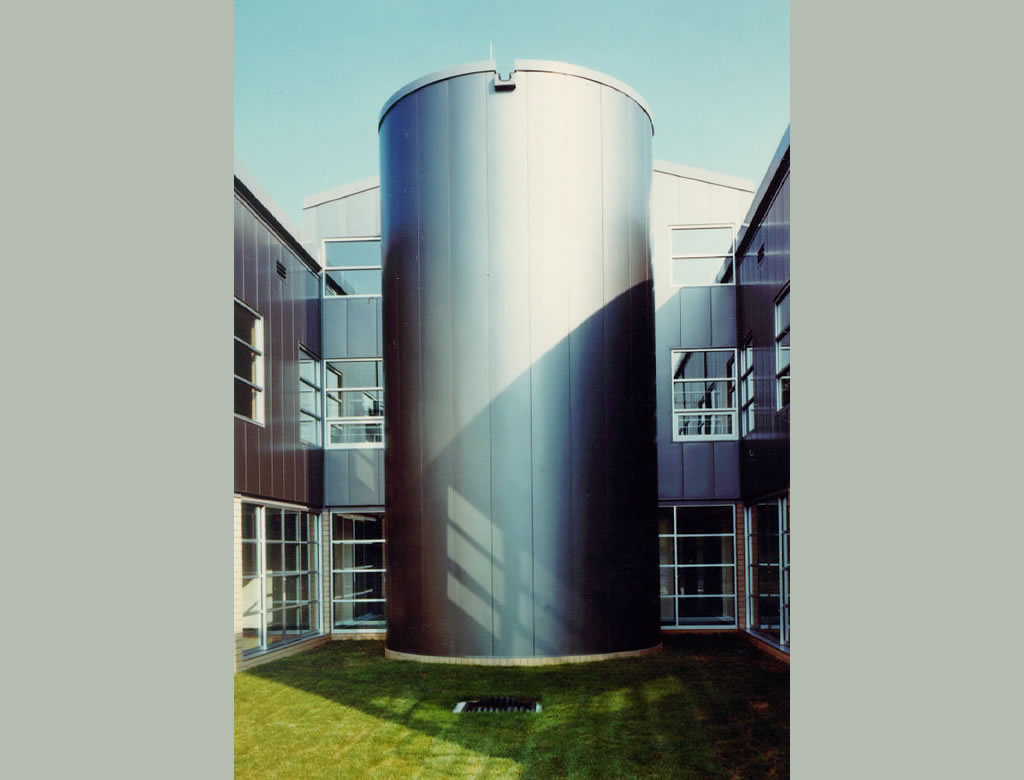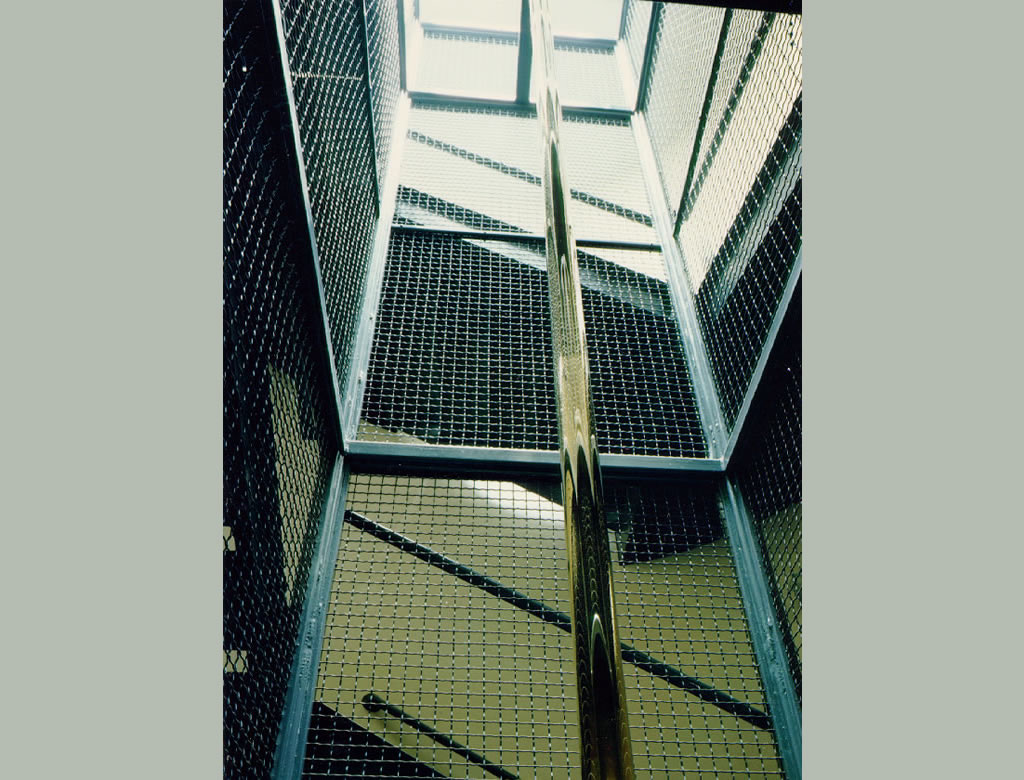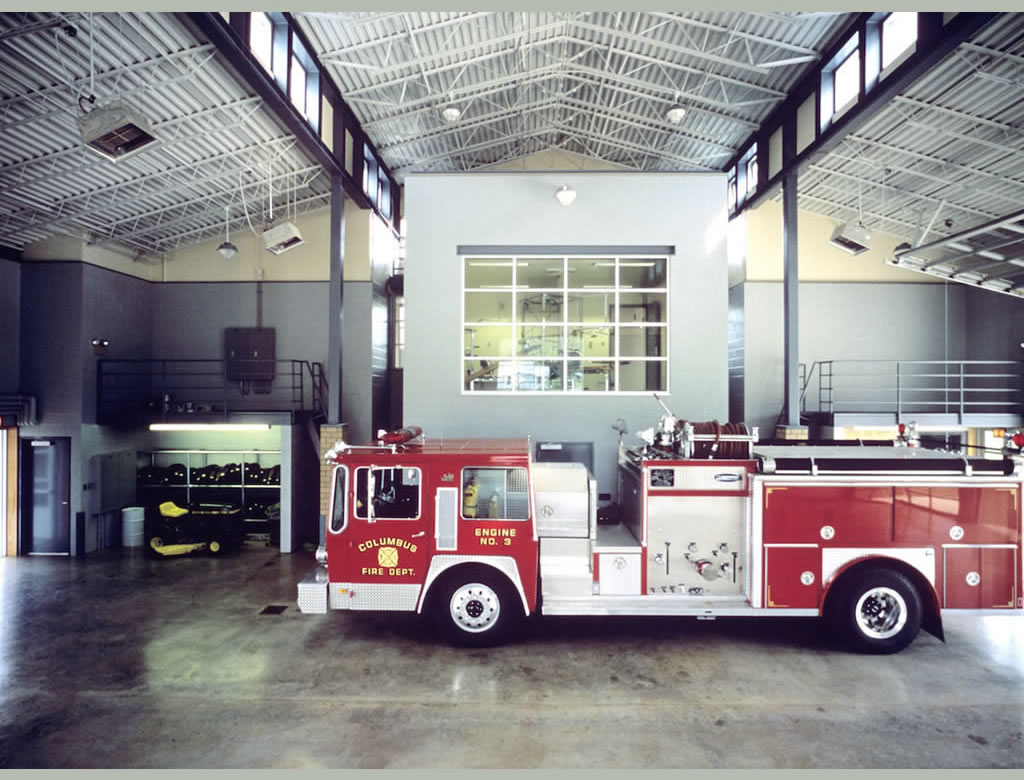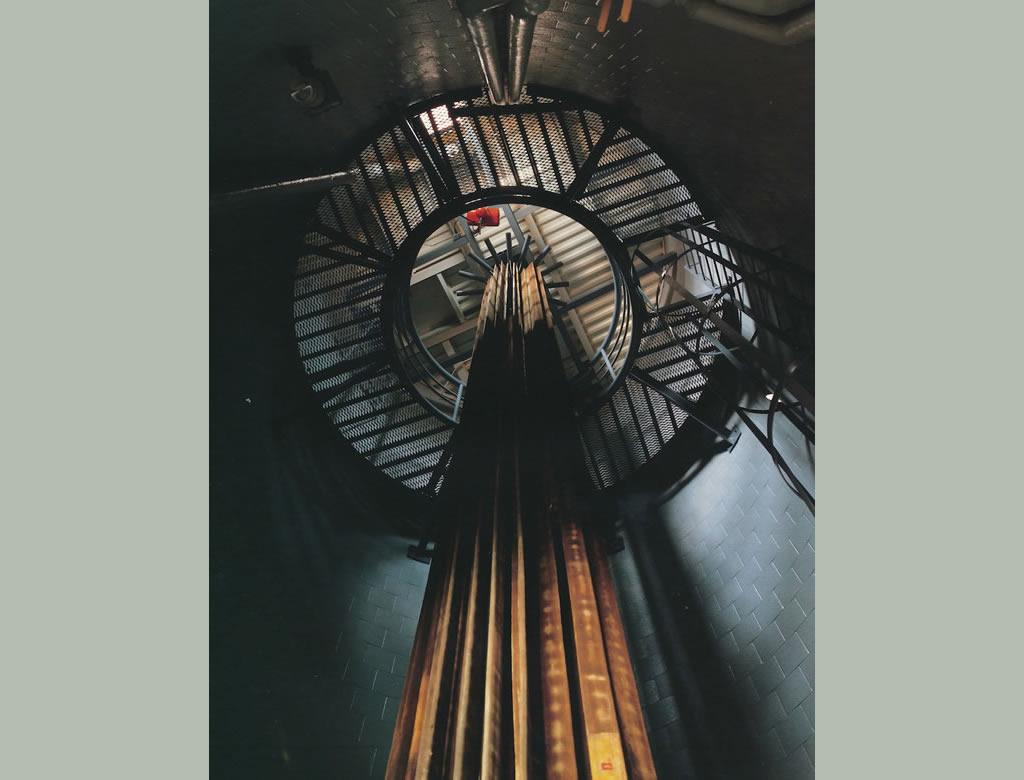Making room for women
Fire Station Five | 1984-1987
Columbus, Indiana
Because firefighters put their lives on the line, firefighting is one of the best-paid occupations in the US but it is also one that has been especially resistant to integrating women. Those few women who pass the required upper body strength tests have been notoriously difficult to retain. The commitment of this city’s Mayor, a woman, to integrate women in the firefighting force provided the opportunity to rethink the type of the fire station. The spatial organization of fire stations, where meals, physical training and leisure are shared in continuous 24-or 48-hour shifts, was part of the problem. Up until this design, the bonding that is necessary to develop trust among the firefighters took place in the shared dormitory and shower facilities, spaces where women felt inadequate or rejected. In Fire Station 5 bonding takes place in the kitchen and the gymnasium, and individual bedrooms with folding beds replace the shared dormitory. Details like see-through kitchen cabinets inhibit the reproduction of gender-coded domestic roles, and the visibility of the fire pole and exercise room puts everyone’s bodies and skills on display. Taking the fire pole tower as a spatial pivot, the building’s volumes and facades are asymmetrical to make legible the separation between public and private spaces; but they are also symmetrical within the open courtyard to assert the goal of parity in the hiring of men and women.
